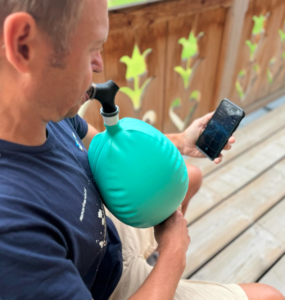
Asthma and chronic obstructive pulmonary disease (COPD) share some similar symptoms, despite being caused by distinct underlying mechanisms. Both conditions often lead to expiratory wheezing—a raspy, whistling sound during exhalation—which is linked to an inability to fully exhale. This prolongs the exhalation phase of the breathing cycle and can result in shortness of breath. In severe cases, patients may experience “breath-stacking,” a condition where they inhale to maximum lung volume but cannot exhale enough to make room for the next breath. This can be extremely uncomfortable and, at times, dangerous.
Key Differences Between Asthma and COPD
Asthma is primarily influenced by genetic factors and involves a triad of symptoms: bronchospasm (tightening of the small airways), increased mucus production, and airway inflammation. On the other hand, COPD is most commonly caused by long-term cigarette smoking, which damages the airways and lung tissue, leading to persistent inflammation and structural changes in the lungs.
Current Treatments and the Role of Respiratory Muscle Training (RMT)
Both asthma and COPD are typically managed with inhaled medications delivered via commercially available “puffers.” These treatments aim to reduce inflammation and promote bronchodilation, a process that relaxes the airway muscles to improve airflow. Interestingly, rebreathing carbon dioxide (CO2) has been shown to have a similar positive effect on the lungs. Elevated CO2 levels can promote bronchodilation and vasodilation, improving blood flow and facilitating better airflow. This is where respiratory muscle training (RMT) with the Breathe Way Better (BWB) device becomes transformative.
The BWB device not only helps balance CO2 levels but also directly benefits lung physiology. Controlled rebreathing exercises using the device can enhance both lung capacity and breathing efficiency, addressing key aspects of pulmonary rehabilitation for patients with asthma and COPD.
Beyond Physiology: Functional Breathing Patterns
RMT with the BWB device goes beyond physiological improvements. By training patients to control and time their breaths, irritation of the airways can be reduced. Controlled diaphragmatic breathing decreases the turbulence caused by over-breathing or panic breathing, leading to a calming effect on the airways. Incorporating nasal breathing into this practice offers additional benefits, such as improved oxygenation and enhanced diaphragm strengthening.
The mask version of the BWB device makes it easier for patients to integrate these techniques into their daily routines, improving their overall quality of life. Consistent breath training with a focus on functional breathing patterns can significantly help individuals manage respiratory dysfunction, such as asthma and COPD.
Medical Licensing and Accessibility
The BWB device has received medical licensing in Canada, making it a valuable supplement for patients seeking to improve their respiratory health. This breathing resistance device is not only effective for COPD management and asthma control but also serves as a practical tool for lung capacity improvement, pulmonary rehabilitation, and addressing respiratory dysfunction solutions. With its ability to enhance breathing efficiency and quality of life, the BWB device is a game-changer in functional breathing training.
By adopting a structured approach to respiratory muscle training, patients can build stronger respiratory muscles, improve breath work, and regain control over their breathing. For those suffering from asthma or COPD, this innovative solution offers hope for better exercise tolerance and a more active, fulfilling life.



